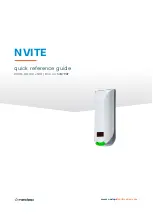
1. System Installation Requirements
1-17
TI 33Q01J10-01E
Crest factor = Peak value of device input current/Effective value of device input current
The crest factor must be considered for the input current supplied to every device connected to
the system when estimating the power output capacity in selecting the power unit. Approximate
device crest factors should be as follows:
100-120 V supply voltage:
Crest factor About 3.
220-240 V supply voltage:
Crest factor About 6.
Common Method to Determine Power Unit Capacity
The following shows the commonly used method used to determine the power unit capacity
taking the crest factor into consideration - the final determination should be made in consultation
with a power unit manufacturer:
• If the specification of power unit crest factor (the peak current value allowable for the
effective current value) is larger than the above device crest factor, the power unit can be
used for up to full rated capacity. However, in-rush current, backup time, reserve capacity,
etc., must be separately taken into consideration.
• If the power unit crest factor is smaller than the device crest factor, the power unit capacity
needs to be calculated in the expression shown below. In-rush current, backup time, reserve
capacity, etc., must be separately taken into consideration.
Power unit output capacity = Total device power consumption x Capacity coefficient
Capacity coefficient = Device crest factor / Power unit crest factor specification
In-Rush Current
When the equipment is turned on, a large in-rush current flows as the capacitor is
instantaneously charged and the transformer is excited. When any equipment is turned on
or shut down, this should not cause any voltage fluctuation that could adversely affect other
equipment. Do not turn on all equipment at the same time. Start equipment one by one.
Power may be switched to backup or AC line power if in-rush current activates the overload
protection circuit on power-up. After such an overload, select an uninterruptible power unit, with
automatic-recovery.
Suppressing Harmonic Current
In order to suppress harmonic current supplied to a low-voltage distribution system, it is
necessary to install a power unit or an active harmonic suppressor, such as indicated below,
between a device and the distribution system:
• Power unit equipped with the harmonic suppression function (a high power-factor inverter-
type uninterruptible power unit, etc.)
• Active harmonic suppressor
In Europe, a power unit should be selected so that harmonic current emissions are within the
limits specified by EMC regulations.
The capacity of the harmonic suppression unit should be determined in consultation with a power
unit manufacturer in the same manner as the selection of power unit’s output capacity previously
discussed.
Nov. 20, 2003-00
















































